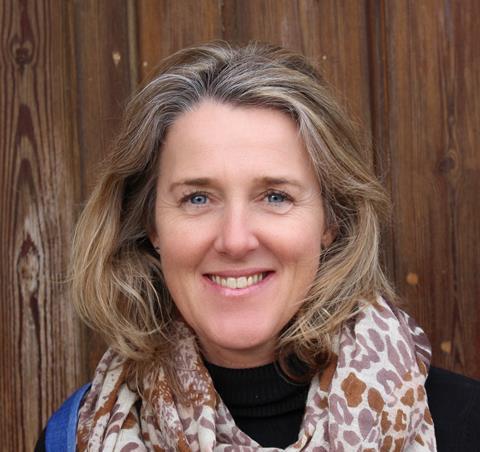As public spaces continue to feel unsafe for many, it’s time to rethink how design can make streets and cities more welcoming for everyone, writes Sophie Thompson

When actors on a recent The Graham Norton Show laughed at how impractical using a mobile phone as a weapon of self-defence might be, Saoirse Ronan hit back, saying this was something “girls have to think about all the time – am I right, ladies?”. Her comment went viral. This time, the conversation needs to stay alive, not flare and disappear.
As the nights draw in, safety on streets and in public spaces always feels pressing – although, as the response to Ronan’s comment testifies, more than half of the UK’s population think about this all year round.
The charity Plan International UK reports that only five per cent of girls in the UK feel completely safe in public spaces. They also suggest that women in the UK are facing a hidden ‘safety tax’. Their 2024 survey of 1,000 girls and young women aged 14–21 revealed that 62% take taxis regularly to avoid the risks of public transport, including harassment. This amounts to an average spend of around £528 a year, with one in six paying more than £900 annually – not great for many still on the wrong side of the pay divide.
The survey also revealed that many women (74%) take a longer way home if the route is better lit. Women talk (57%) or message (38%) someone all the way home. They stick to busy roads (51%), avoid eye contact, turn on location tracking, hold their keys, wear one earphone only, and comfortable shoes that they can run in.
And it’s not just women or girls who feel this way.
How can those of us who help shape streets, spaces and the built environment bring about change? It doesn’t help that there’s still a gender imbalance in UK urban planning, engineering and design, especially in the most senior positions.
Nor does it help when design starts with the buildings rather than with what will make a place inclusive and work well for everyone. Take ‘Secured by Design’ (SBD). Now in its 35th year, SBD is a police initiative to improve the security of buildings and their immediate surroundings.
‘Secured by Design – Homes 2024’ states that development is compromised by excessive permeability, where a burglar could make an easier getaway. The thinking is that the more permeable a place is, the more crime. For women, however, having a choice of routes can make the difference between a place feeling safe or not. Nuance and balance are needed, but too often, the guidance’s implementation depends on the approach of Designing Out Crime Officers, who may have a single-minded focus.

Standards have been further compounded by advice from counter-terrorism and security professionals – for example, relating to hostile vehicle mitigation measures. Seating is often designed out to reduce lingering, even though seeing other people around is nearly always what makes a street or public space feel safer. Urbanist Jane Jacobs wryly observed that while violent crime can happen in a well-lit but empty subway station, it will almost never happen in a full but darkened theatre.
Under SBD guidelines, planting is often heavily restricted in case it impedes surveillance. Plants need to be looked after, and clear sightlines must be maintained. But designing out trees and plants is not great for anyone and, in light of the ecological crisis, it’s a disaster.
Getting lighting right is obviously critical, but again, it’s a mistake to take a one-size-fits-all approach. When it came to rethinking Whitfield Gardens off Tottenham Court Road in Camden, warm, ‘living room’ lighting integrated into new seating made the space immediately feel more welcoming.
There are no easy answers, but two things are clear – there is much more we could be doing, and it couldn’t be more urgent
In larger spaces, concentrating lighting on key routes can condense activity and make places safer, while lower levels of lighting elsewhere protect nature. This is how Queen Elizabeth Olympic Park was designed, and a similar principle was adopted in the restoration of Union Terrace Gardens in central Aberdeen to consign its reputation for anti-social behaviour to history.
The question of safe space needs to be front of mind whenever we start planning a project. Moves might include designing in activity, higher footfall, better legibility and wayfinding, and wider pavements. Traffic engineering is key – from slowing cars to bringing roads to grade and integrating more cycling, play, and sociability. If underpasses cannot be eliminated, there are leads abroad to follow, like the feminist city of Umea in Sweden, where the railway station underpass is flooded with light, has no corners, and features a recording of poetry on the wall tiles read by the poet herself. All this is the product of an approach to planning and design where everyone is used to asking, “Who might we have left out?”.
Inclusivity in early design thinking is fundamental. There’s been fantastic work by groups like Make Space for Girls to improve the quality of conversations and expand engagement with women and girls. Designers are learning how to make public spaces more comfortable for girls to exercise, turning around a bias in provision for sport and exercise that overtly favours boys.
So, we need more support for design that deploys cross-discipline common sense and brings landscape architects into the decision-making process early on for projects large and small. And we need an overhaul of guidance to assist professionals in the built environment. Make Space for Girls, for example, has worked closely with the London Legacy Development Corporation (LLDC) and Arup on a pioneering handbook to address gender biases in design and planning. LLDC says they are the first local planning authority to do so. Others need to follow.
There are no easy answers, but two things are clear – there is much more we could be doing, and it couldn’t be more urgent. We can’t hold our keys – and our breath – forever.
Postscript
Sophie Thompson is Head of Public Realm and a board member at LDA Design
















No comments yet